27 sierpnia, 2020
Rituximab and Plasma Exchange in Antineutrophil Cytoplasmic Antibody-Associated Vasculitis
Efficacy of Rituximab and Plasma Trade in Antineutrophil Cytoplasmic Antibody-Related Vasculitis with Extreme Renal Illness
Background: Therapy of sufferers with ANCA-associated vasculitis (AAV) and extreme renal involvement just isn’t established. We describe outcomes in response to rituximab (RTX) versus cyclophosphamide (CYC) and plasma trade (PLEX).
Strategies: A retrospective cohort examine of MPO- or PR3-ANCA-positive sufferers with AAV (MPA and GPA) and extreme renal illness (eGFR <30 ml/min per 1.73 m2). Remission, relapse, ESKD and demise after remission-induction with CYC or RTX, with or with out the usage of PLEX, have been in contrast.
Outcomes: Of 467 sufferers with energetic renal involvement, 251 had extreme renal illness. Sufferers acquired CYC (n=161) or RTX (n=64) for remission-induction, and 51 have been additionally handled with PLEX. Predictors for ESKD and/or demise at 18 months have been eGFR <15 ml/min per 1.73 m2 atprognosis (IRR 3.09 [95% CI 1.49 to 6.40], P=0.002), renal restoration (IRR 0.27 [95% CI 0.12 to 0.64], P=0.003) and renal remission at 6 months (IRR 0.40 [95% CI 0.18 to 0.90], P=0.027).
RTX was similar to CYC in remission-induction (BVAS/WG=0) at 6 months (IRR 1.37 [95% CI 0.91 to 2.08], P=0.132). Addition of PLEX confirmed no profit on remission-induction at 6 months (IRR 0.73 [95% CI 0.44 to 1.22], P=0.230), the speed of ESKD and/or demise at 18 months (IRR 1.05 [95% CI 0.51 to 2.18], P=0.891), development to ESKD (IRR 1.06 [95% CI 0.50 to 2.25], P=0.887), and survival at 24 months (IRR 0.54 [95% CI 0.16 to 1.85], P=0.330).
Conclusions: The obvious advantages and dangers of utilizing CYC or RTX for the therapy of sufferers with AAV and extreme renal illness are balanced. The addition of PLEX to straightforward remission-induction remedy confirmed no profit in our cohort. A randomized managed trial is the one passable means to judge efficacy of remission-induction remedies in AAV with extreme renal involvement.
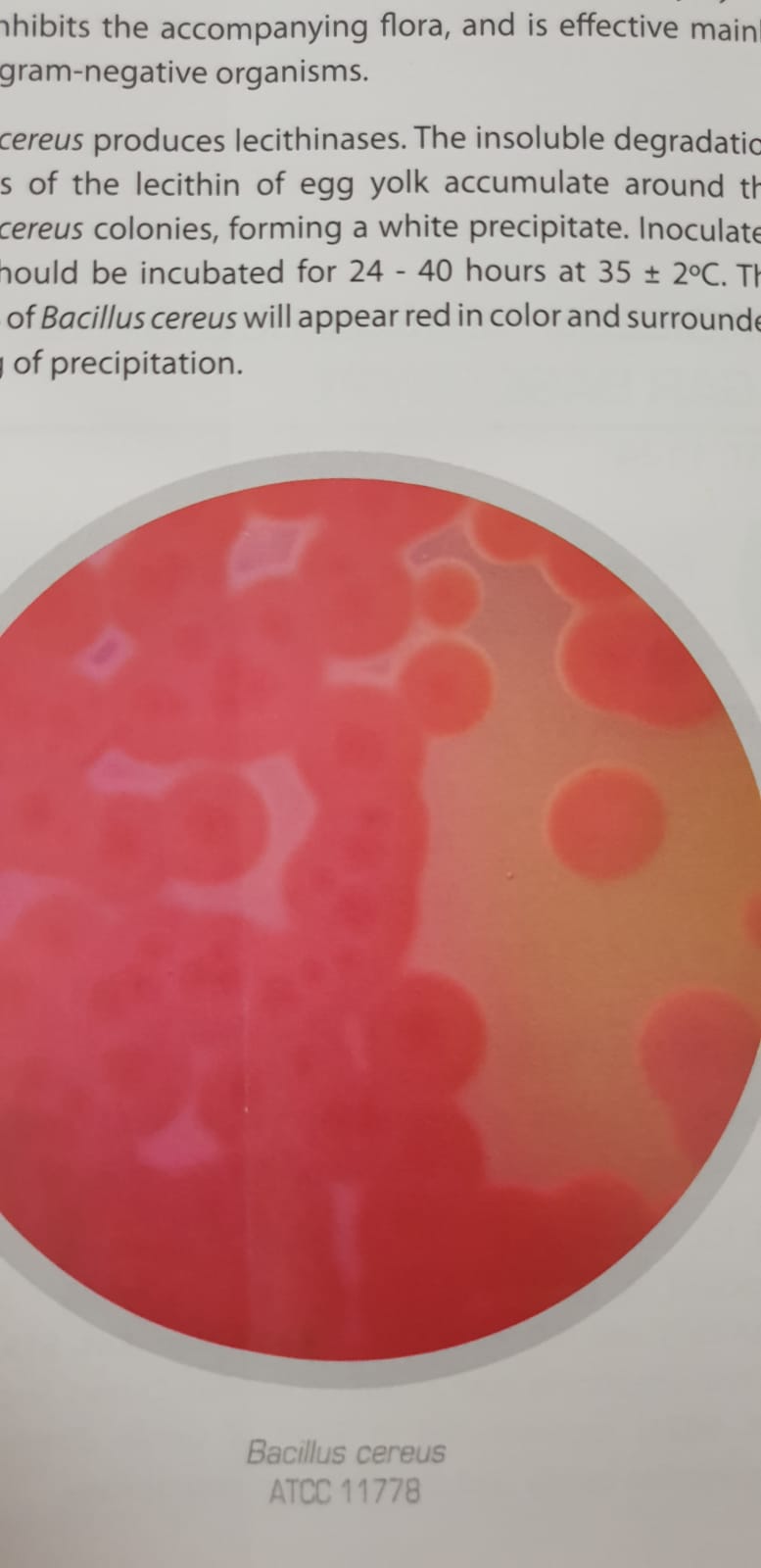
cDNA
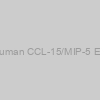 Nori® Human CCL-15/MIP-5 ELISA Kit |
|||
| GR111519 | Genorise Scientific | 96-well | EUR 461 |
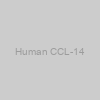 Human CCL-14 |
|||
| hAP-0138 | Angio Proteomie | 100ug | EUR 250 |
 Human CCL-14 |
|||
| hAP-0138A | Angio Proteomie | 100ug | EUR 250 |
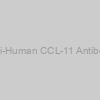 Anti-Human CCL-11 Antibody |
|||
| 101-M161 | ReliaTech | 100 µg | EUR 399 |
|
Description: CCL11 is a potent eosinophil chemoattractant that was originally purified from bronchoalveolar lavage fluid of guinea pigs sensitized by aerosol challenge with ovalbumin. Microsequencing of the purified protein revealed the guinea pig CCL11 to be a member of the beta (CC) chemokine family of inflammatory and immunoregulatory cytokines. cDNA clones for guinea pig, mouse, and human CCL11 have been isolated. Human CCL11 cDNA encodes a 97 amino acid residue precursor protein from which the aminoterminal 23 amino acid residues are cleaved to generate the 74 amino acid residue mature human CCL11. At the protein sequence level, mature human CCL11 is approximately 60% identical to mature mouse and guinea pig CCL11. In addition, human CCL11 also shows high amino acid sequence identity to human MCP1, 2, and 3. Human CCL11 is chemotactic for eosinophils, but not mononuclear cells or neutrophils. The CC chemokine receptor 3 (CCR3) has now been identified to be a specific human CCL11 receptor. CCR3 has also been shown to serve as a cofactor for a restricted subset of primary HIV viruses and binding of CCL11 to CCR3 inhibited infection by the HIV isolates. |
|||
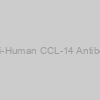 Anti-Human CCL-14 Antibody |
|||
| 101-M162 | ReliaTech | 100 µg | EUR 399 |
|
Description: CCL14 is a chemokine that promotes chemotaxis of T cells, monocytes, and eosinophils. It occurs in two isoforms resulting from differential mRNA splicing. Following cleavage of a 19 amino acid signal peptide, mature CCL14a (aa 20-93) is a 74 amino acid peptide that is also known as HCC1 (Hemofiltrate CC Chemokine1). It is a weak CCR1 agonist, however, an 8 amino acid Nterminal truncation (aa 28 93) allows potent signaling through CCR1 and CCR5. CCL14b, also called HCC3, is a 90 amino acid peptide (aa 20-109) resulting from the insertion of 16 amino acids between residues 7 and 8 of CCL14a. |
|||
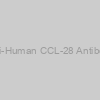 Anti-Human CCL-28 Antibody |
|||
| 101-M185 | ReliaTech | 100 µg | EUR 399 |
|
Description: CCL-28 or MEC is a secreted CC chemokine expressed primarily by epithelial cells of the bronchioles, salivary gland, mammary gland and colon. MEC signals through the CCR10 receptor and chemoattracts resting CD4, CD8 T-cells and eosinophils. MEC contains six cysteines including the four highly conserved cysteine residues present in CC chemokines. Recombinant human MEC is a 12.3 kDa protein containing 108 amino acid residues. |
|||
 Anti-Human CCL-14 Antibody |
|||
| 101-M246 | ReliaTech | 100 µg | EUR 399 |
|
Description: CCL14 is a chemokine that promotes chemotaxis of T cells, monocytes, and eosinophils. It occurs in two isoforms resulting from differential mRNA splicing. Following cleavage of a 19 amino acid signal peptide, mature CCL14a (aa 20-93) is a 74 amino acid peptide that is also known as HCC1 (Hemofiltrate CC Chemokine1). It is a weak CCR1 agonist, however, an 8 amino acid Nterminal truncation (aa 28 93) allows potent signaling through CCR1 and CCR5. CCL14b, also called HCC3, is a 90 amino acid peptide (aa 20-109) resulting from the insertion of 16 amino acids between residues 7 and 8 of CCL14a. |
|||
 Anti-Human CCL-11 Antibody |
|||
| 101-M256 | ReliaTech | 100 µg | EUR 399 |
|
Description: CCL11 is a potent eosinophil chemoattractant that was originally purified from bronchoalveolar lavage fluid of guinea pigs sensitized by aerosol challenge with ovalbumin. Microsequencing of the purified protein revealed the guinea pig CCL11 to be a member of the beta (CC) chemokine family of inflammatory and immunoregulatory cytokines. cDNA clones for guinea pig, mouse, and human CCL11 have been isolated. Human CCL11 cDNA encodes a 97 amino acid residue precursor protein from which the aminoterminal 23 amino acid residues are cleaved to generate the 74 amino acid residue mature human CCL11. At the protein sequence level, mature human CCL11 is approximately 60% identical to mature mouse and guinea pig CCL11. In addition, human CCL11 also shows high amino acid sequence identity to human MCP1, 2, and 3. Human CCL11 is chemotactic for eosinophils, but not mononuclear cells or neutrophils. The CC chemokine receptor 3 (CCR3) has now been identified to be a specific human CCL11 receptor. CCR3 has also been shown to serve as a cofactor for a restricted subset of primary HIV viruses and binding of CCL11 to CCR3 inhibited infection by the HIV isolates. |
|||
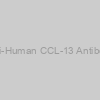 Anti-Human CCL-13 Antibody |
|||
| 101-M257 | ReliaTech | 100 µg | EUR 399 |
|
Description: CCL13, also known as Monocyte Chemoattractant Protein4 (MCP4), is a CC chemokine that acts as a chemoattractant for monocytes, eosinophils and T cells and as an activator of basophils. Human CCL13 cDNA encodes a 98 amino acid residue precursor protein with a 23 amino acid residue hydrophobic signal peptide that is cleaved to yield an 8 kDa, 75 aa mature CCL13. Mature CCL13 lacks any potential N-glycosylation sites and shares a pyroglutamate proline motif with other human MCP proteins. Human CCL13 is most homologous to MCP1, 3 and Eotaxin, exhibiting approximately 65-66% amino acid sequence identity. CCL13 mRNA is expressed by a number of activated cell types, including endothelial cells, macrophages, bronchial epithelium and type II alveolar cells, and perhaps lymphocytes. The bioactivities of CCL13 are mediated by the CC chemokine receptors CCR2 and CCR3. |
|||
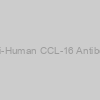 Anti-Human CCL-16 Antibody |
|||
| 101-M259 | ReliaTech | 100 µg | EUR 399 |
|
Description: CCL16, also known as HCC-4, is a CC chemokine that interacts with CCR1, CCR2, and CCR5. CCL16 is expressed weakly by NK cells, γδ T cells, and some T cells and is upregulated in monocytes by IL-10. CCL16 functions as a chemoattractant for monocytes and promotes the maturation of monocyte derived dendritic cells. |
|||
 Anti-Human CCL-17 Antibody |
|||
| 101-M260 | ReliaTech | 100 µg | EUR 399 |
|
Description: CCL17 is a novel CC chemokine identified using a signal sequence trap method. CCL17 cDNA encodes a highly basic 94 amino acid (aa)residue precursor protein with a 23 aa residue signal peptide that is cleaved to generate the 71 aa residue mature secreted protein. Among CC chemokine family members, CCL17 has approximately 24-29% amino acid sequence identity with RANTES, MIP1α, MIP1β, MCP1, MCP2, MCP3, and I309. The gene for human CCL17 has been mapped to chromosome 16q13 rather than chromosome 17 where the genes for many human CC chemokines are clustered. CCL17 is constitutively expressed in thymus, and at a lower level in lung, colon, and small intestine. CCL17 is also transiently expressed in stimulated peripheral blood mononuclear cells. Recombinant CCL17 has been shown to be chemotactic for T cell lines but not monocytes or neutrophils. CCL17 was identified to be a specific functional ligand for CCR4, a receptor that is selectively expressed on T cells. |
|||
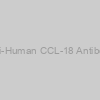 Anti-Human CCL-18 Antibody |
|||
| 101-M261 | ReliaTech | 100 µg | EUR 399 |
|
Description: CCL18, also known as PARC (Pulmonary and Activation-regulated Chemokine), is expressed by monocyte-derived dendritic cells and Th2 cytokine-stimulated macrophages. It functions as a chemoattractant for naïve T cells but not monocytes or neutrophils. |
|||
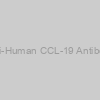 Anti-Human CCL-19 Antibody |
|||
| 101-M262 | ReliaTech | 100 µg | EUR 399 |
|
Description: CCL19, also known as MIP3β and ELC (EBI1Ligand Chemokine), is a 77 amino acid (aa) β chemokine that is distantly related to other β chemokines (20-30% aa sequence identity). The gene for MIP3β has been mapped to chromosome 9p13 rather than chromosome 17 where the genes for many human β chemokines are clustered. MIP3β is constitutively expressed in various lymphoid tissues (including thymus, lymph nodes, appendix and spleen). The expression of MIP3β is downregulated by the antiinflammatory cytokine IL10. Recombinant MIP3β is chemotactic for cultured human lymphocytes. MIP3β is a ligand for CCR7 (previously referred to as the EpsteinBarr virus-induced gene 1 (EBI1) orphan receptor), a chemokine receptor that is expressed in various lymphoid tissues and activated B and T lymphocytes. CCR7 is strongly upregulated in B cells infected with EpsteinBarr virus and T cells infected with herpesvirus 6 or 7. |
|||
 Anti-Human CCL-20 Antibody |
|||
| 101-M264 | ReliaTech | 100 µg | EUR 399 |
|
Description: CCL20, also known as LARC (Liver and Activation-regulated Chemokine) and as Exodus, is one of many novel β chemokines identified through bioinformatics. CCL20 cDNA encodes a 96 amino acid (aa) residue precursor protein with a 26 aa residue signal peptide that is predicted to be cleaved to form the 70 aa residue mature secreted protein. CCL20 is distantly related to other β chemokines (20-28% aa sequence identity) and the gene for CCL20 has been mapped to chromosome 2 rather than 17. CCL20 has been shown to be expressed predominantly in lymph nodes, appendix, PBL, fetal liver, fetal lung and several cell lines. The expression of CCL20 is strongly upregulated by inflammatory signals and downregulated by the anti-inflammatory cytokine IL10. Synthetic or recombinant CCL20 has been shown to be chemotactic for lymphocytes and to inhibit proliferation of myeloid progenitors in colony formation assays. CCL20 has now been shown to be a unique functional ligand for CCR6 (previously referred to as GPRCY4, CKRL3, or STRL22 orphan receptor), a chemokine receptor that is selectively and highly expressed in human dendritic cells derived from CD34+ cord blood precursors. |
|||
 Anti-Human CCL-21 Antibody |
|||
| 101-M265 | ReliaTech | 100 µg | EUR 399 |
|
Description: 6Ckine or CCL-21 is a novel CC chemokine discovered independently by three groups from the EST database. 6Ckine, also named SLC (Secondary Lymphoid-tissue Chemokine), CCL21 and Exodus2, shows 21 33% identity to other CC chemokines. 6Ckine contains the four conserved cysteines characteristic of β chemokines plus two additional cysteines in its unusually long carboxy-lterminal domain. Human 6Ckine cDNA encodes a 134 amino acid residue, highly basic, precursor protein with a 23 amino acid residue signal peptide that is cleaved to form the predicted 111 amino acid residue mature protein. Mouse 6Ckine cDNA encodes a 133 amino acid residue protein with a 23 residue signal peptide that is cleaved to generate the 110 residue mature protein. Human and mouse 6Ckine are highly conserved, exhibiting 86% amino acid sequence identity. 6Ckine is constitutively expressed at high levels in lymphoid tissues such as lymph nodes, spleen and appendix. In mouse, high levels of 6Ckine mRNA are also detected in the lung. The gene for human 6Ckine has been localized at human chromosome 9p13 rather than chromosome 17 where the genes of many human CC chemokines are clustered. The 6Ckine gene location is within a region of about 100 kb from the gene for MIP3β/ ELC, another novel CC chemokine. |
|||
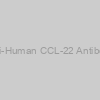 Anti-Human CCL-22 Antibody |
|||
| 101-M266 | ReliaTech | 100 µg | EUR 399 |
|
Description: CCL22, also named stimulated T cell chemotactic protein (STCP1) and MDC, is a CC chemokine initially isolated from clones of monocytederived macrophages. Human CCL22 cDNA encodes a precursor protein of 93 amino acid residues with a 24 amino acid residue predicted signal peptide that is cleaved to yield a 69 amino acid residue mature 8 kDa protein. At the amino acid sequence level, CCL22 shows less than 35% identity to other CC chemokine family members. Human CCL22 is expressed in dendritic cells, macrophages and activated monocytes. In addition, CCL22 expression is also detected in the tissues of thymus, lymph node and appendix. The gene for human CCL22 has been mapped to chromosome 16 rather than chromosome 17 where the genes for many human CC chemokines are clustered. Recombinant or chemically synthesized mature CCL22 has been shown to induce chemotaxis or Ca2+ mobilization in dendritic cells, IL2 activated NK cells, and activated T lymphocytes. A CD8+ T lymphocytederived secreted soluble activity that suppresses infection by primary non-syncytium-inducing and syncytium-inducing HIV1 isolates and the T cell lineadapted isolate HIV1 IIIB, has been identified as CCL22. Based on aminoterminal sequence analysis, the major CD8 + T lymphocyte-derived CCL22 protein yielded an amino-terminal sequence of YGANM, which is two amino acid residues shorter than the predicted mature CCL22. The difference in potency between the two mature CCL22 isoforms has not been determined. |
|||
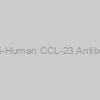 Anti-Human CCL-23 Antibody |
|||
| 101-M267 | ReliaTech | 100 µg | EUR 399 |
|
Description: CCL23, also known as Myeloid Progenitor Inhibitory Factor1 (MPIF1), is a CC chemokine that is produced by some myeloid cell lines and monocytederived dendritic cells. It binds CCR1 and inhibits the differentiation of progenitor cells that give rise to granulocytes and macrophages. CCL23 is also chemotactic for resting T cells, neutrophils, monocytes and dendritic cells. |
|||
 Anti-Human CCL-24 Antibody |
|||
| 101-M268 | ReliaTech | 100 µg | EUR 399 |
|
Description: Eotaxin2, also named MPIF2 and Ckβ6, is a CC chemokine that is designated CCL24. Eotaxin2 cDNA encodes a 10.5 kDa, 119 amino acid residue precursor protein with a 26 aa residue signal peptide that is cleaved to generate a mature protein predicted to contain 93 amino acid residues with an N-glycosylation site. C-terminally truncated variants with 78, 73, 75 and 76 residues have also been described. Eotaxin 2 shares 40%, 42% and 39% amino acid sequence identity with other CC chemokines CCL7/MCP3, CCL3/MIP1α, and CCL11/Eotaxin, respectively. Eotaxin2 mRNA is weakly expressed in activated monocytes and T lymphocytes. Recombinant Eotaxin2 induces chemotaxis of eosinophils, basophils, and resting T lymphocytes, but not monocytes or activated T lymphocytes. Eotaxin2 also suppresses colony formation by high proliferative multipotential hematopoietic progenitors. On eosinophils, the effects of Eotaxin2, Eotaxin and CCL13/MCP4 are mediated by the receptor CCR3. |
|||
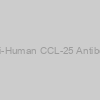 Anti-Human CCL-25 Antibody |
|||
| 101-M269 | ReliaTech | 100 µg | EUR 399 |
|
Description: CCL25 (thymus-expressed chemokine) is a CC chemokine that is distantly related (approximately 20% amino acid sequence identity) to other CC chemokines. Human CCL25 cDNA encodes a 150 aa precursor protein with a 23 aa signal peptide that is cleaved to yield a 127 aa mature protein. Mouse CCL25 cDNA has also been cloned and shown to encode a 144 aa protein that exhibits 49% aa sequence identity to human CCL25. The expresssion of human and mouse CCL25 was shown to be highly restricted to the thymus and small intestine. Although dendritic cells have been demonstrated to be the source of CCL25 production in the thymus, dendritic cells derived from bone marrow do not express CCL25. The gene for mouse CCL25 has been mapped to chromosome 8 rather than chromosome 11 where many mouse CC chemokines are clustered. Recombinant human and mouse CCL25 are chemotactic for activated macrophages, dendritic cells and thymocytes. CCL25 is also a specific agonist for the CCR9 chemokine receptor. |
|||
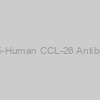 Anti-Human CCL-26 Antibody |
|||
| 101-M270 | ReliaTech | 100 µg | EUR 399 |
|
Description: Eotaxin-3 is a CC chemokine that signals through the CCR3 receptor. It is produced by endothelial cells stimulated with IL-4 or IL-13. Eotaxin-3 selectively targets cells expressing CCR3, including eosinophils, basophils, T cells and monocytes. Eotaxin-3 has similar activity to Eotaxin and Eotaxin-2, but the three Eotaxins share only a low degree of sequence homology. Recombinant human Eotaxin-3 is an 8.4 kDa protein containing 71 amino acid residues, including the four highly conserved cysteine residues present in CC chemokines. |
|||
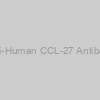 Anti-Human CCL-27 Antibody |
|||
| 101-M271 | ReliaTech | 100 µg | EUR 399 |
|
Description: CTACK or CCL-27 is a keratinocyte-derived CC chemokine which signals through the CCR10 receptor. Both CTACK and CCR10 are expressed in normal and irritated epithelial cells. CTACK selectively attracts CLA+ T-cells and directs them into the skin. CTACK contains the four highly conserved cysteine residues present in most CC chemokines. The mature protein contains 88 amino acid residues. Recombinant human CTACK is a 10.2 kDa protein containing 88 amino acid residues. |
|||
 Anti-Human CCL-28 Antibody |
|||
| 101-M272 | ReliaTech | 100 µg | EUR 399 |
|
Description: CCL-28 or MEC is a secreted CC chemokine expressed primarily by epithelial cells of the bronchioles, salivary gland, mammary gland and colon. MEC signals through the CCR10 receptor and chemoattracts resting CD4, CD8 T-cells and eosinophils. MEC contains six cysteines including the four highly conserved cysteine residues present in CC chemokines. Recombinant human MEC is a 12.3 kDa protein containing 108 amino acid residues. |
|||
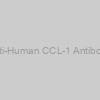 Anti-Human CCL-1 Antibody |
|||
| 101-M255 | ReliaTech | 100 µg | EUR 399 |
|
Description: ccbe1 is not expressed in endothelial cells of lymph vessels, and it may be a component of the extracellular matrix. In zebrafish, ccbe1 expression was observed along the earliest migration routes of endothelial cells that sprout from the posterior cardinal vein and migrate circuitously before developing into lymphatic vessels. ccbe1 might therefore be involved in guidance of these migrating cells. |
|||
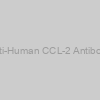 Anti-Human CCL-2 Antibody |
|||
| 101-M263 | ReliaTech | 100 µg | EUR 399 |
|
Description: CCL2 is a βchemokine that is also known as monocyte chemotactic protein 1 (MCP1). It is produced by a variety of cell types and is chemotactic for monocytes. |
|||
 Anti-Human CCL-3 Antibody |
|||
| 101-M273 | ReliaTech | 100 µg | EUR 399 |
|
Description: The macrophage inflammatory proteins 1α and 1β were originally copurified from medium conditioned by an LPS-stimulated murine macrophage cell line. Human MIP1α refers to the products of several independently cloned cDNAs, including LD78, pL78, pAT464, and GOS19. These cDNAs all code for the same human protein that is a homologue of the murine MIP 1α. Mature MIP1α and MIP1β in both human and mouse share approximately 70% homology at the amino acid level. The MIP1 proteins are members of the β (CC) subfamily of chemokines. Both MIP1α and MIP1β are monocyte chemoattractants in vitro. Additionally, the MIP1 proteins have been reported to have chemoattractant and adhesive effects on lymphocytes, with MIP1α and MIP1β preferentially attracting CD8+ and CD4+ T cells, respectively. MIP1α has also been shown to attract B cells as well as eosinophils. MIP1 proteins have been reported to have multiple effects on hematopoietic precursor cells and MIP1α has been identified as a stem cell inhibitory factor that can inhibit the proliferation of hematopoietic stem cells in vitro as well as in vivo. The functional receptor for MIP1α has been identified as CCR1 and CCR5. |
|||
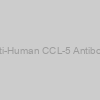 Anti-Human CCL-5 Antibody |
|||
| 101-M274 | ReliaTech | 100 µg | EUR 399 |
|
Description: CCL5, also known as RANTES (Regulated upon Activation, Normal T cell Expressed and presumably Secreted) is a member of the β (CC) chemokine subfamily. It binds and activates the chemokine receptors CCR1, 3 and 5. |
|||
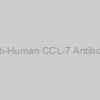 Anti-Human CCL-7 Antibody |
|||
| 101-M275 | ReliaTech | 100 µg | EUR 399 |
|
Description: MCP2 and CCL7 are two monocyte chemotactic proteins produced by human MG63 osteosarcoma cells. Both MCP2 and CCL7 are members of the CC family of chemokines and share 62% and 71% amino acid sequence identity, respectively, with MCP1. CCL7 also shares 58% amino acid identity with MCP2. CCL7 cDNA encodes a 99 amino acid residue precursor protein from which the N-terminal 23 amino acid residues are cleaved to generate the 76 amino acid residue mature CCL7. Mature CCL7 contains a potential N-linked and several possible O-linked glycosylation sites. Similarly to other CC chemokines, all three MCP proteins are monocyte chemoattractants. In addition, the three MCPs can chemoattract activated NK cells as well as CD4+ and CD8+ T lymphocytes. All three cytokines have also been shown to attract eosinophils and induce histamine secretion from basophils. |
|||
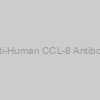 Anti-Human CCL-8 Antibody |
|||
| 101-M276 | ReliaTech | 100 µg | EUR 399 |
|
Description: CCL8, also known as Monocyte Chemoattractant Protein 2 (MCP2), is an inflammatory CC chemokine that attracts monocytes, eosinophils and basophils. It is produced by many cell types and signals through interactions with CCR1, CCR2, CCR3 and CCR5. |
|||
 Antibody) Anti-Human CCL-17 (TARC) Antibody |
|||
| 101-M164 | ReliaTech | 100 µg | EUR 399 |
|
Description: CCL17 is a novel CC chemokine identified using a signal sequence trap method. CCL17 cDNA encodes a highly basic 94 amino acid (aa)residue precursor protein with a 23 aa residue signal peptide that is cleaved to generate the 71 aa residue mature secreted protein. Among CC chemokine family members, CCL17 has approximately 24-29% amino acid sequence identity with RANTES, MIP1α, MIP1β, MCP1, MCP2, MCP3, and I309. The gene for human CCL17 has been mapped to chromosome 16q13 rather than chromosome 17 where the genes for many human CC chemokines are clustered. CCL17 is constitutively expressed in thymus, and at a lower level in lung, colon, and small intestine. CCL17 is also transiently expressed in stimulated peripheral blood mononuclear cells. Recombinant CCL17 has been shown to be chemotactic for T cell lines but not monocytes or neutrophils. CCL17 was identified to be a specific functional ligand for CCR4, a receptor that is selectively expressed on T cells. |
|||
 Antibody) Anti-Human CCL-27 (CTACK) Antibody |
|||
| 101-M184 | ReliaTech | 100 µg | EUR 399 |
|
Description: CTACK or CCL-27 is a keratinocyte-derived CC chemokine which signals through the CCR10 receptor. Both CTACK and CCR10 are expressed in normal and irritated epithelial cells. CTACK selectively attracts CLA+ T-cells and directs them into the skin. CTACK contains the four highly conserved cysteine residues present in most CC chemokines. The mature protein contains 88 amino acid residues. Recombinant human CTACK is a 10.2 kDa protein containing 88 amino acid residues. |
|||
 Mouse Monoclonal anti-Human CCL-11 |
|||
| hAP-0136 | Angio Proteomie | 100ug | EUR 250 |
 Mouse Monoclonal anti-Human CCL-11 |
|||
| hAP-0136A | Angio Proteomie | 100ug | EUR 250 |
 Mouse Monoclonal anti-human CCL-28 |
|||
| hAP-0153 | Angio Proteomie | 100ug | EUR 250 |
 Mouse Monoclonal anti-human CCL-28 |
|||
| hAP-0153A | Angio Proteomie | 100ug | EUR 250 |
 Sheep Polyclonal anti-Human CCL-28 |
|||
| hAP-5717 | Angio Proteomie | 50ug | EUR 400 |
 Antibody) Anti-Human CCL-5 (RANTES) Antibody |
|||
| 101-M191 | ReliaTech | 100 µg | EUR 399 |
|
Description: CCL5, also known as RANTES (Regulated upon Activation, Normal T cell Expressed and presumably Secreted) is a member of the β (CC) chemokine subfamily. It binds and activates the chemokine receptors CCR1, 3 and 5. |
|||
) Human RANTES (CCL 5) |
|||
| MBS692044-0005mg | MyBiosource | 0.005mg | EUR 300 |
) Human RANTES (CCL 5) |
|||
| MBS692044-002mg | MyBiosource | 0.02mg | EUR 450 |
) Human RANTES (CCL 5) |
|||
| MBS692044-5x002mg | MyBiosource | 5x0.02mg | EUR 1725 |
 Mouse Monoclonal anti-Human CCL-1 |
|||
| hAP-0135 | Angio Proteomie | 100ug | EUR 250 |
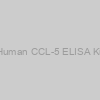 Human CCL-5 ELISA Kit |
|||
| EHC0240 | Abclonal | 96Tests | EUR 625.2 |
 Anti-Mouse CCL-11 Antibody |
|||
| 103-M321 | ReliaTech | 100 µg | EUR 399 |
|
Description: CCL11 is a potent eosinophil chemoattractant that was originally purified from bronchoalveolar lavage fluid of guinea pigs sensitized by aerosol challenge with ovalbumin. Mouse CCL11 cDNA encodes a 97 amino acid (aa) precursor protein from which the aminoterminal 23 aa are cleaved to generate the 74 aa mature mouse CCL11. At the protein sequence level, mature mouse CCL11 is approximately 60% identical to mature human and guinea pig CCL11. In addition, mouse CCL11 also shows high aa sequence identity to members of the MCP family. Mouse CCL11 is chemotactic for eosinophils, but not mononuclear cells or neutrophils. CCL11 mRNA is expressed in a variety of tissues. The expression of CCL11 mRNA is induced in cultured endothelial cells in response to IFNγ. In addition, CCL11 mRNA is also induced in response to the transplantation of IL4secreting tumor cells. The CC chemokine receptor 3 (CCR3) has been identified as a specific human CCL11 receptor. |
|||
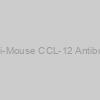 Anti-Mouse CCL-12 Antibody |
|||
| 103-M322 | ReliaTech | 100 µg | EUR 399 |
|
Description: CCL12 is a cloned mouse CC chemokine most closely related to human MCP1 (66% amino acid (aa) sequence identity in the mature protein). Mouse CCL12 encodes a 104 aa residue precursor protein with a 22 aa residue predicted hydrophobic signal sequence that is cleaved to generate a 82 aa residue mature protein. CCL12 is expressed constitutively in the thymus and lymph nodes. Under inflammatory conditions, CCL12 expression is also induced in activated macrophages and mast cells. The gene for mouse MCP1 has been mapped to the CC chemokine cluster on chromosome 11. Recombinant CCL12 has been shown to be a potent chemoattractant for monocytes and lymphocytes but not neutrophils. At high concentrations, CCL12 will also chemoattract eosinophils. CCL12 has been found to be a functional ligand for CCR2 but not CCR1, CCR3, or CCR5. |
|||
 Anti-Mouse CCL-17 Antibody |
|||
| 103-M323 | ReliaTech | 100 µg | EUR 399 |
|
Description: Human thymus and activationregulated chemokine (TARC) also known as CCL17, is a novel CC chemokine identified using a signal sequence trap method. Mouse CCL17 was discovered as a dendritic cell (DC) specific gene by differentiation RNA display. Mouse CCL17 cDNA encodes a highly basic 93 amino acid (aa) residue precursor protein with a 23 aa residue putative signal peptide that is cleaved to generate the 70 aa residue mature secreted protein. Among CC chemokine family members, CCL17 has approximately 24-29% amino acid sequence identity with RANTES, MIP1α, MIP1β, MCP1, MCP2, MCP3, and I309. The gene for human CCL17 has been mapped to chromosome 16q13 rather than chromosome 17 where the genes for many human CC chemokines are clustered. Mouse CCL17 is constitutively expressed in thymic DC, and at a lower level in lymph node DC in the lung. Recombinant CCL17 has been shown to be chemotactic for T cell lines and antigen-primed T helper cells. In humans, CCL17 was identified to be a specific functional ligand for CCR4 and CCR8, receptors that are selectively expressed on T cells. |
|||
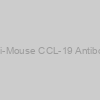 Anti-Mouse CCL-19 Antibody |
|||
| 103-M324 | ReliaTech | 100 µg | EUR 399 |
|
Description: CCL19/MIP3β, also known as ELC (EBI1Ligand Chemokine), is a β chemokine that binds specifically to the chemokine receptor CCR7/EBI1/ BLR2. Mouse (human) CCL19 cDNA encodes a 108 (98) amino acid precursor protein with a predicted 25 (21) aa signal peptide that is cleaved to form the 83 (77) aa mature secreted protein. CCL19 is distantly related to other β chemokines (20-30% aa sequence identity). Mouse CCL19 shares 83% aa sequence homology with human CCL19. CCL19 has been shown to be constitutively expressed in various lymphoid tissues (including thymus, lymph nodes, appendix, and spleen) in dendritic cells within the T-cell zone. The expression of CCL19 is downregulated by the antiinflammatory cytokine IL10. Recombinant CCL19 has been shown to be chemotactic for Tcells and Bcells. The CCL19 receptor (CCR7/ EBI1/ BLR2) is expressed in various lymphoid tissues and activated B and T lymphocytes. CCR7 is also strongly upregulated in Bcells infected with EpsteinBarr virus and T-cells infected with herpesvirus 6 or 7. |
|||
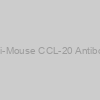 Anti-Mouse CCL-20 Antibody |
|||
| 103-M326 | ReliaTech | 100 µg | EUR 399 |
|
Description: Macrophage inflammatory protein 3 alpha (MIP-3α) is a member of the CC chemokine superfamily and has been designated CCL20. CCL20 is a β chemokine that is strongly up-regulated by inflammatory signals and down-regulated by the anti-inflammatory cytokine IL-10. CCL20 binds to CCR6 to promote chemotaxis of lymphocytes and inhibit the proliferation of myeloid progenitors. |
|||
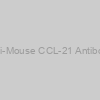 Anti-Mouse CCL-21 Antibody |
|||
| 103-M327 | ReliaTech | 100 µg | EUR 399 |
|
Description: 6Ckine is a novel CC chemokine discovered independently by three groups from the EST database. 6Ckine, also named SLC (secondary lymphoidtissue chemokine), CCL21 and Exodus2, shows 21-33% identity to other CC chemokines. 6Ckine contains the four conserved cysteines characteristic of β chemokines plus two additional cysteines in its unusually long carboxy-lterminal domain. Human 6Ckine cDNA encodes a 134 amino acid highly basic precursor protein with a 23 amino acid residue signal peptide that is cleaved to form the predicted 111 amino acid residue mature protein. Mouse 6Ckine cDNA encodes a 133 amino acid residue protein with a 23 residue signal peptide that is cleaved to generate the 110 residue mature protein. Human and mouse 6Ckine share 86% amino acid sequence identity. 6Ckine is constitutively expressed at high levels in lymphoid tissues such as lymph nodes, spleen and appendix. In mouse, high levels of 6Ckine mRNA are also detected in the lung. Unlike most CC chemokines, 6Ckine is not chemotactic for monocytes. Recombinant mouse 6Ckine is chemotactic in vitro for thymocytes and activated T cells. Recombinant human 6Ckine has been shown to be chemotactic for some human T cell lines, resting PBL, and cultured T cells expanded with PHA and IL2. 6Ckine has also been reported to inhibit hemopoietic progenitor colony formation in a dosedependent manner. 6Ckine acts via the CC receptor CCR7 on T cells and B cells. |
|||
 Anti-Mouse CCL-22 Antibody |
|||
| 103-M328 | ReliaTech | 100 µg | EUR 399 |
|
Description: CCL22, also known as ABCD1 and MDC (macrophage-derived chemokine), is a CC chemokine cloned from activated mouse B cells. Mouse CCL22 cDNA encodes a precursor protein of 92 amino acid (aa) residues with a 24 aa residue predicted signal peptide that is cleaved to yield a 68 aa residue mature 7.8 kDa protein. At the amino acid sequence level, mouse and human CCL22 share 64% identity and 83% similarity. The genomic organization of the mouse and human CCL22 genes are very similar, exhibiting sequence identity at the intron-exon boundaries. Mouse CCL22 is expressed at high levels in dendritic cells and activated B lymphocytes. Low levels of mouse CCL22 mRNA are also detectable in lung, unstimulated spleen cells, lymph node cells and in thymocytes. CCL22 is a functional ligand for the CC chemokine receptor 4. Recombinant or chemically synthesized mature mouse CCL22 has been shown to induce chemotaxis or Ca2+ mobilization in activated mouse and human T cells. |
|||
 Anti-Mouse CCL-24 Antibody |
|||
| 103-M329 | ReliaTech | 100 µg | EUR 399 |
|
Description: Eotaxin2, also named myeloid progenitor inhibitory factor (MPIF2), is a member of the CC chemokine subfamily and is designated CCL24. Eotaxin2 is constitutively expressed in the jejunum and spleen. It can also be induced in the lung by allergen challenge and IL4. LPS and IL4 also differentially regulate the expression of Eotaxin2 in monocytes and macrophages. Mouse Eotaxin2 cDNA encodes a 119 amino acid (aa) precursor protein that shares approximately 58% aa sequence identity with human Eotaxin2. Functionally, Eotaxin2is most closely related to CCL11/Eotaxin and CCL26/Eotaxin3. The three proteins share low sequence homology but have been shown to be potent eosinophil chemoattractants that bind and activate the chemokine receptor CCR3, a receptor that is highly expressed in eosinophils. Eotaxin2 also has the ability to suppress myeloid cell proliferation, a biological function not shared by Eotaxin. |
|||
 Anti-Mouse CCL-25 Antibody |
|||
| 103-M330 | ReliaTech | 100 µg | EUR 399 |
|
Description: CCL25 (thymus expressed chemokine), also known as TECK (thymus-expressed chemokine), is a CC chemokine that is distantly related (twenty some % amino acid sequence identity) to other CC chemokines. Mouse CCL25 cDNA encodes a 144 amino acid residue precursor protein with a 23 amino acid residue signal peptide that is cleaved to yield a 121 residue mature protein. Mouse CCL25 shares 49% amino acid sequence identity with human CCL25. The expresssion of human and mouse CCL25 was shown to be highly restricted to the thymus and small intestine. Although dendritic cells have been demonstrated to be the source of CCL25 production in the thymus, dendritic cells derived from bone marrow do not express CCL25. The gene for mouse CCL25 has been mapped to chromosome 8. |
|||
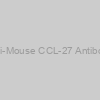 Anti-Mouse CCL-27 Antibody |
|||
| 103-M331 | ReliaTech | 100 µg | EUR 399 |
|
Description: CCL27, also known as CTACK (cutaneous T cel-lattracting chemokine), ALP, ILC, and ESkine, is a member of the CC family of chemokines. Mature mouse CCL27 is a 95 amino acid (aa) protein that shares 57% aa and 87% aa sequence identity with human and rat CCL27, respectively. It shares 18-31% aa sequence identity with other mouse CC chemokines. An alternately spliced form of mouse CCL27, known as PESKY, is localized to the nucleus and promotes cellular migration. CCL27 is constitutively expressed by keratinocytes and is upregulated by inflammatory stimuli and in wounded skin. CCL27 binds the chemokine receptor CCR10, glycosaminoglycans in the extracellular matrix, sulfated tyrosine residues on PSGL1, and determinants on the surface of fibroblasts and endothelial cells. CCL27 cooperates with CCL17/TARC in inducing the migration of cutaneous lymphocyte antigen (CLA) positive memory T cells to the skin during inflammation. Endothelial cellbound CCL27 can mediate the adhesion of those cells to CLA+ T cells. CCL27 also induces the migration of keratinocyte precursors from bone marrow to the skin, thereby promoting wound healing. In humans, serum CCL27 levels are elevated and correlate with disease severity in atopic dermatitis, psoriasis vulgaris, and mycosis fungoides. |
|||
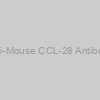 Anti-Mouse CCL-28 Antibody |
|||
| 103-M332 | ReliaTech | 100 µg | EUR 399 |
|
Description: Mouse CCL28 (CC chemokine ligand 28) is a novel CC chemokine cloned from a Rag1 mouse kidney cDNA library. Mouse CCL28 cDNA encodes a 130 amino acid (aa) precursor protein with a 22 aa signal peptide and a 108 aa mature protein. Mature human and mouse CCL28 share 83% aa identity. Among CC chemokines, CCL28 shares the most homology with CCL27/CTACK. Mouse CCL28 is produced by epithelial cells. Based on Northern blot analysis, it is mainly expressed in testes, kidney and brain. The receptor for CCL28 has been identified as the CCR10, which is also the receptor for CCL27/CTACK. |
|||
 Antibody) Anti-Human CCL-23 (MPIF-1) Antibody |
|||
| 101-M183 | ReliaTech | 100 µg | EUR 399 |
|
Description: CCL23, also known as Myeloid Progenitor Inhibitory Factor1 (MPIF1), is a CC chemokine that is produced by some myeloid cell lines and monocytederived dendritic cells. It binds CCR1 and inhibits the differentiation of progenitor cells that give rise to granulocytes and macrophages. CCL23 is also chemotactic for resting T cells, neutrophils, monocytes and dendritic cells. |
|||
) Mouse Monoclonal anti-human CCL-22 (MDC) |
|||
| hAP-0147 | Angio Proteomie | 100ug | EUR 250 |
) Mouse Monoclonal anti-human CCL-17 (TARC) |
|||
| hAP-0141 | Angio Proteomie | 100ug | EUR 250 |
) Mouse Monoclonal anti-human CCL-17 (TARC) |
|||
| hAP-0141A | Angio Proteomie | 100ug | EUR 250 |
) Mouse Monoclonal anti-human CCL-18 (PARC) |
|||
| hAP-0142 | Angio Proteomie | 100ug | EUR 250 |
) Mouse Monoclonal anti-human CCL-25 (TECK) |
|||
| hAP-0150 | Angio Proteomie | 100ug | EUR 250 |
) Sheep Polyclonal anti-Human CCL-17 (TARC) |
|||
| hAP-5708 | Angio Proteomie | 50ug | EUR 400 |
) Sheep Polyclonal anti-Human CCL-18 (PARC) |
|||
| hAP-5709 | Angio Proteomie | 50ug | EUR 400 |
) Sheep Polyclonal anti-Human CCL-25 (TECK) |
|||
| hAP-5714 | Angio Proteomie | 50ug | EUR 400 |
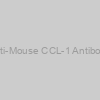 Anti-Mouse CCL-1 Antibody |
|||
| 103-M320 | ReliaTech | 100 µg | EUR 399 |
|
Description: Mouse CCL1, also known as TCA3, is a member of the CC beta family of chemokines. The human chemokine I309, which shares approximately 42% amino acid (aa) sequence identity, has been assumed to be the homologue of mouse TCA3. Mouse TCA3 and human I309 also share significant sequence homology in the 5' flanking region of their genes and each contain an extra pair of cysteine residues not found in most other chemokines. CCL1 cDNA encodes a 92 aa residue precursor protein with a predicted 23 aa signal peptide that is cleaved to produce a 69 aa mature protein. The sequence of CCL1 contains one potential Nlinked glycosylation site. Mouse CCL1 is found on the distal portion of mouse chromosome 11 in a cluster with MIP1α, MIP1β and JE. CCL1 acts by binding to the seven transmembrane spanning G-protein coupled receptor, CCR8. CCL1 has been shown to chemoattract T cells. |
|||
 Anti-Mouse CCL-2 Antibody |
|||
| 103-M325 | ReliaTech | 100 µg | EUR 399 |
|
Description: Mouse CCL2 is a member of the β (CC) subfamily of chemokines. The mouse CCL2 gene was initially identified as a plateletderived growth factorinducible gene in mouse fibroblasts. Mouse CCL2 cDNA encodes a 148 amino acid (aa) residue with a putative 23 aa signal peptide that is cleaved to generate the mature protein. Mouse CCL2 shares 82% amino acid sequence identity with rat CCL2. Mouse CCL2 also shares 55% amino acid sequence identity with human MCP1. Compared to human MCP1, mouse CCL2 has a 49 aa residue extension at the carboxyterminus. When a DNA sequence encoding the 125 aa residue of the mature CCL2 protein was expressed in E. coli at R&D Systems, the purified protein had the predicted N-terminus but a mass of 8525 Da. The truncation of most of the C terminal extension could be due either to purification artifact or to posttranslational modification. The truncated recombinant CCL2 has a potency similar to that of human MCP1 in the monocyte chemotaxis assay. Mouse CCL2 has full activity on human cells while human MCP1 has limited activity on mouse cells. |
|||
 Anti-Mouse CCL-3 Antibody |
|||
| 103-M333 | ReliaTech | 100 µg | EUR 399 |
|
Description: The macrophage inflammatory proteins 1α (or CCL3) and 1β, two closely related but distinct proteins, were originally co purified from medium conditioned by a LPS-stimulated murine macrophage cell line. Mature mouse MIP1α shares approximately 77% and 70% amino acid identity with human MIP1α and mouse MIP1β, respectively. MIP1 proteins are expressed primarily in T cells, B cells, and monocytes after antigen or mitogen stimulation. The MIP1 proteins are members of the β (CC) subfamily of chemokines. Both MIP1α and MIP1β are monocyte chemoattractants in vitro. Additionally, the MIP1 proteins have been reported to have chemoattractant and adhesive effects on lymphocytes, with MIP1α and MIP1β preferentially attracting CD8+ and CD4+ T cells, respectively. MIP1α has also been shown to attract B cells as well as eosinophils. MIP1 proteins have been reported to have multiple effects on hematopoietic precursor cells and MIP1α has been identified as a stem cell inhibitory factor that can inhibit the proliferation of hematopoietic stem cells in vitro as well as in vivo. In the same assays, MIP1β was reported to be much less active. The functional receptor for MIP1α has been identified as CCR1 and CCR5. |
|||
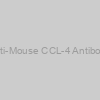 Anti-Mouse CCL-4 Antibody |
|||
| 103-M334 | ReliaTech | 100 µg | EUR 399 |
|
Description: CCL4, also known as macrophage inflammatory protein 1 beta (MIP1β), is a 12 kDa β chemokine that is secreted at sites of inflammation by activated leukocytes, lymphocytes, vascular endothelial cells, and pulmonary smooth muscle cells (1, 2). CCL4 attracts a variety of immune cells to sites of microbial infection as well as to other pathologic inflammation such as allergic asthma and ischemic myocardium. A CCL4 deficiency in mice promotes the development of autoantibodies, possibly as a result of compromised regulatory T cell recruitment. CCL4 is secreted from activated monocytes as a heterodimer with CCL3/MIP1α. The first two N-terminal amino acids can be cleaved from human CCL4 by CD26/DPPIV. Both the full length and truncated forms exert biological activity through CCR5, and the truncated form additionally interacts with CCR1 and CCR2. In humans, the ability of CCL4 to bind CCR5 inhibits the cellular entry of Mtropic HIV1 which utilizes CCR5 as a coreceptor. Both forms of CCL4 block HIV1 infection of T cells by inducing the downregulation of CCR5. Mature mouse CCL4 shares 77% and 86% amino acid sequence identity with human and rat CCL4, respectively. |
|||
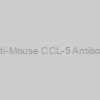 Anti-Mouse CCL-5 Antibody |
|||
| 103-M335 | ReliaTech | 100 µg | EUR 399 |
|
Description: CCL5, also known as RANTES (Regulated upon Activation, Normal T cell Expressed and presumably Secreted), is an 8 kDa βchemokine that plays a primary role in the inflammatory immune response by means of its ability to attract and activate leukocytes. Human and mouse RANTES exhibit cross-species activity on human and mouse cells (4). Mature mouse CCL5 shares 100% amino acid (aa) sequence identity with rat CCL5 and 75-88% with canine, cotton rat, feline, and human CCL5. CCL5 is secreted by many cell types at inflammatory sites, and it exerts a wide range of activities through the receptors CCR1, CCR3, CCR4, and CCR5. Inflammatory responses can be impaired by the sequestration of CCL5 by the cytomegalovirus protein US28. In humans, CCR5 binding to CCL5 inhibits the infectivity of R5 (M tropic) but not X4 (T tropic) strains of HIV. The two N-terminal residues of CCL5 can be removed by CD26/DPPIV, generating a protein that functions as a chemotaxis inhibitor and more effectively blocks M tropic HIV 1 infection of monocytes. Oligomerization of CCL5 on glycosaminoglycans is required for CCR1mediated leukocyte adhesion and activation as well as CCL5’s interaction with the chemokine CXCL4/PF4. The deposition of CCL5 on activated vascular endothelial cells is crucial for monocyte adhesion to damaged vasculature, but CCL5 oligomerization is not required for the extravasation of adherent leukocytes. CCL5 is upregulated in breast cancer and promotes tumor progression through the attraction of proinflammatory macrophages in addition to its actions on tumor cells, stromal cells, and the vasculature. |
|||
 Anti-Mouse CCL-6 Antibody |
|||
| 103-M336 | ReliaTech | 100 µg | EUR 399 |
|
Description: Mouse CCL6, a member of the β subfamily of chemokines, was initially identified as a transcript that is induced in bone marrow cells upon stimulation with GM-CSF. A human homologue for mouse CCL6 has not been identified. The mCCL6 cDNA encodes a 116 amino acid residue precursor protein with a hydrophobic signal peptide that is cleaved to yield a 95 amino acid residue mature protein. Compared to other chemokines, mCCL6 has a large N-terminal extension. The expression of CCL6 mRNA has been detected in mouse monocytes and neutrophils, where it is strongly induced upon GM-CSF stimulation. CCL6 expression has also been detected in an IL2-dependent T cell line, where the expression is inhibited following T cell stimulation. Mouse CCL6 expression was also shown to be strongly induced by IL-4 in mouse macrophages. The gene for CCL6 has been mapped to mouse chromosome 11. |
|||
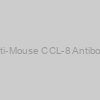 Anti-Mouse CCL-8 Antibody |
|||
| 103-M337 | ReliaTech | 100 µg | EUR 399 |
|
Description: CCL8, also known as Monocyte Chemoattractant Protein 2 (MCP2), is an inflammatory CC chemokine that attracts monocytes, eosinophils and basophils. It is produced by many cell types and signals through interactions with CCR1, CCR2, CCR3 and CCR5. |
|||
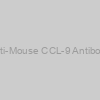 Anti-Mouse CCL-9 Antibody |
|||
| 103-M338 | ReliaTech | 100 µg | EUR 399 |
|
Description: Mouse CCL9/10 (also named MIP1γ and MRP2) is an 11 kDa, secreted, monomeric polypeptide that belongs to the β (or CC) intercrine family of chemokines. Based on its activity and amino acid (aa) sequence, it is further classified as a member of the NC6 or six cysteinecontaining CC subfamily of chemokines. This subfamily contains four Nterminally extended chemokines, two human (CCL15 and CCL23) and two mouse (CCL9 and CCL10). Within this subfamily, there are no humanto rodent interspecies orthologs. Mouse CCL9/10 is synthesized as a 122 aa precursor that contains a 21 aa signal sequence and a 101 aa mature region with six cysteines. As noted, the mature region has an expanded Nterminus relative to other CC family members, and it forms a third intrachain disulfide bond with its two extra cysteines. Mouse CCL9/10 is 75% aa identical to rat CCL9/10. Chemokines are known to undergo proteolytic processing to generate multiple isoforms. NC6 chemokines are usually only marginally active at fulllength, but are converted to highly active forms upon Nterminal truncation. Mature CCL9, in the presence of inflammatory fluids, is naturally truncated by 28, 29 or 30 aa at the Nterminus, generating a highly active, 8 kDa, 71 73 aa CCR1 ligand. In contrast, other CCR1 ligands, CCL3/MIP1α and CCL5/RANTES, lose their potency when proteolytically processed. CCL9/10 is constitutively secreted, and circulates as a fulllength molecule. Any onset of inflammation with subsequent enzyme release may act on local NC6 chemokines, generating early, potent leukocyte chemoattractants. |
|||
) Mouse Monoclonal anti-human CCL-27 (CTACK) |
|||
| hAP-0152 | Angio Proteomie | 100ug | EUR 250 |
) Mouse Monoclonal anti-human CCL-27 (CTACK) |
|||
| hAP-0152A | Angio Proteomie | 100ug | EUR 250 |
) Sheep Polyclonal anti-Human CCL-27 (CTACK) |
|||
| hAP-5716 | Angio Proteomie | 50ug | EUR 400 |
) Mouse Monoclonal anti-human CCL-21 (6Ckine) |
|||
| hAP-0146 | Angio Proteomie | 100ug | EUR 250 |
) Sheep Polyclonal anti-Human CCL-21 (6Ckine) |
|||
| hAP-5711 | Angio Proteomie | 50ug | EUR 400 |
) Mouse Monoclonal anti-human CCL-24 (Eotaxin) |
|||
| hAP-0149 | Angio Proteomie | 100ug | EUR 250 |
) Sheep Polyclonal anti-Human CCL-11 (Eotaxin) |
|||
| hAP-5703 | Angio Proteomie | 50ug | EUR 400 |
) Sheep Polyclonal anti-Human CCL-24 (Eotaxin) |
|||
| hAP-5713 | Angio Proteomie | 50ug | EUR 400 |
 Antibody) Anti-Human CCL-3 (MIP1 alpha) Antibody |
|||
| 101-M186 | ReliaTech | 100 µg | EUR 399 |
|
Description: The macrophage inflammatory proteins 1α and 1β were originally copurified from medium conditioned by an LPS-stimulated murine macrophage cell line. Human MIP1α refers to the products of several independently cloned cDNAs, including LD78, pL78, pAT464, and GOS19. These cDNAs all code for the same human protein that is a homologue of the murine MIP 1α. Mature MIP1α and MIP1β in both human and mouse share approximately 70% homology at the amino acid level. The MIP1 proteins are members of the β (CC) subfamily of chemokines. Both MIP1α and MIP1β are monocyte chemoattractants in vitro. Additionally, the MIP1 proteins have been reported to have chemoattractant and adhesive effects on lymphocytes, with MIP1α and MIP1β preferentially attracting CD8+ and CD4+ T cells, respectively. MIP1α has also been shown to attract B cells as well as eosinophils. MIP1 proteins have been reported to have multiple effects on hematopoietic precursor cells and MIP1α has been identified as a stem cell inhibitory factor that can inhibit the proliferation of hematopoietic stem cells in vitro as well as in vivo. The functional receptor for MIP1α has been identified as CCR1 and CCR5. |
|||
 Antibody) Anti-Human CCL-3 (MIP1 alpha) Antibody |
|||
| 101-M187 | ReliaTech | 100 µg | EUR 399 |
|
Description: The macrophage inflammatory proteins 1α and 1β were originally copurified from medium conditioned by an LPS-stimulated murine macrophage cell line. Human MIP1α refers to the products of several independently cloned cDNAs, including LD78, pL78, pAT464, and GOS19. These cDNAs all code for the same human protein that is a homologue of the murine MIP 1α. Mature MIP1α and MIP1β in both human and mouse share approximately 70% homology at the amino acid level. The MIP1 proteins are members of the β (CC) subfamily of chemokines. Both MIP1α and MIP1β are monocyte chemoattractants in vitro. Additionally, the MIP1 proteins have been reported to have chemoattractant and adhesive effects on lymphocytes, with MIP1α and MIP1β preferentially attracting CD8+ and CD4+ T cells, respectively. MIP1α has also been shown to attract B cells as well as eosinophils. MIP1 proteins have been reported to have multiple effects on hematopoietic precursor cells and MIP1α has been identified as a stem cell inhibitory factor that can inhibit the proliferation of hematopoietic stem cells in vitro as well as in vivo. The functional receptor for MIP1α has been identified as CCR1 and CCR5. |
|||
) Mouse Monoclonal anti-human CCL-5 (RANTES) |
|||
| hAP-0155 | Angio Proteomie | 100ug | EUR 250 |
) Mouse Monoclonal anti-human CCL-5 (RANTES) |
|||
| hAP-0155A | Angio Proteomie | 100ug | EUR 250 |
) Mouse Monoclonal anti-human CCL-13 (MCP-4) |
|||
| hAP-0137 | Angio Proteomie | 100ug | EUR 250 |
) Mouse Monoclonal anti-human CCL-16 (HCC-4) |
|||
| hAP-0140 | Angio Proteomie | 100ug | EUR 250 |
) Sheep Polyclonal anti-Human CCL-13 (MCP-4) |
|||
| hAP-5704 | Angio Proteomie | 50ug | EUR 400 |
Neutralizing antibodies correlate with safety from SARS-CoV-2 in people throughout a fishery vessel outbreak with excessive assault fee
The event of vaccines in opposition to SARS-CoV-2 can be significantly facilitated by the identification of immunological correlates of safety in people. Nevertheless, to this point, research on protecting immunity have solely been carried out in animal fashions and correlates of safety haven’t been established in people.
Right here, we describe an outbreak of SARS-CoV-2 on a fishing vessel related to a excessive assault fee. Predeparture serological and viral RT-PCR testing together with repeat testing after return to shore was obtainable for 120 of the 122 individuals on board over a median follow-up of 32.5 days (vary 18.eight to 50.5 days).
A complete of 104 people had an RT-PCR constructive viral check with Ct <35 or seroconverted in the course of the follow-up interval, yielding an assault fee on board of 85.2% (104/122 people). Metagenomic sequencing of 39 viral genomes recommended the outbreak originated largely from a single viral clade.
Solely three crewmembers examined seropositive previous to the boat’s departure in preliminary serological screening and likewise had neutralizing and spike-reactive antibodies in follow-up assays. None of those crewmembers with neutralizing antibody titers confirmed proof of bona fide viral an infection or skilled any signs in the course of the viral outbreak. Due to this fact, the presence of neutralizing antibodies from prior an infection was considerably related to safety in opposition to re-infection (Fisher’s actual check, p=0.002).
EDTA-Anticoagulated Entire Blood for SARS-CoV-2 Antibody Testing by Electrochemiluminescence Immunoassay (ECLIA) and Enzyme-Linked Immunosorbent Assay (ELISA)
Whereas lateral movement check codecs might be utilized with complete blood and low pattern volumes, their diagnostic traits are inferior to immunoassays primarily based on chemiluminescence immunoassay (CLIA) or enzyme-linked immunosorbent assay (ELISA) know-how.
CLIAs and ELISAs might be automated to a excessive diploma however generally require bigger serum or plasma volumes for pattern processing. We addressed the suitability of EDTA-anticoagulated complete blood as a substitute pattern materials for antibody testing in opposition to SARS-CoV-2 by electro-CLIA (ECLIA; Roche, Rotkreuz, Switzerland) and ELISA (IgG and IgA; Euroimmun, Germany).
Concurrently drawn venous serum and EDTA-anticoagulated complete blood samples from 223 people have been included. Correction of the entire blood outcomes for hematocrit led to settlement with the serum outcomes for weakly to reasonably constructive antibody alerts.
In receiver-operating attribute curve evaluation, all three assays displayed comparable diagnostic accuracy (space beneath the curve (AUC)) utilizing corrected complete blood and serum (AUCs: 0.97 for ECLIA and IgG ELISA; 0.84 for IgA ELISA). In conclusion, our outcomes recommend that the investigated assays can reliably detect antibodies in opposition to SARS-CoV-2 in hemolyzed complete blood anticoagulated with EDTA.
Correction of those outcomes for hematocrit is recommended. This examine demonstrates that the automated processing of complete blood for identification of SARS-CoV-2 antibodies with widespread ECLIA and ELISA strategies is correct and possible.
 Human Integrin alpha-X ELISA kit |
|||
| E01I0494-48 | BlueGene | 1 plate of 48 wells | EUR 624 |
|
|||
|
Description: A sandwich ELISA for quantitative measurement of Human Integrin alpha-X in samples from blood, plasma, serum, cell culture supernatant and other biological fluids. This is a high quality ELISA kit developped for optimal performance with samples from the particular species. |
|||
 Human Integrin alpha-X ELISA kit |
|||
| E01I0494-96 | BlueGene | 1 plate of 96 wells | EUR 822 |
|
|||
|
Description: A sandwich ELISA for quantitative measurement of Human Integrin alpha-X in samples from blood, plasma, serum, cell culture supernatant and other biological fluids. This is a high quality ELISA kit developped for optimal performance with samples from the particular species. |
|||
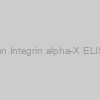 Human Integrin alpha-X ELISA Kit |
|||
| MBS7254267-10x96StripWells | MyBiosource | 10x96-Strip-Wells | EUR 5685 |
 Human Integrin alpha-X ELISA Kit |
|||
| MBS7254267-48StripWells | MyBiosource | 48-Strip-Wells | EUR 485 |
 Human Integrin alpha-X ELISA Kit |
|||
| MBS7254267-5x96StripWells | MyBiosource | 5x96-Strip-Wells | EUR 3020 |
 Human Integrin alpha-X ELISA Kit |
|||
| MBS7254267-96StripWells | MyBiosource | 96-Strip-Wells | EUR 690 |
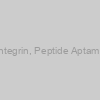 Alpha V Beta 5 Integrin, Peptide Aptamer, FITC labelled |
|||
| AP-301-F | Alpha Diagnostics | 1 mg | Ask for price |
 Protein) Human Integrin Alpha X (ITGaX) Protein |
|||
| 20-abx166474 | Abbexa |
|
|
|
|||
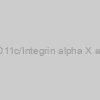 anti- CD11c/Integrin alpha X antibody |
|||
| FNab01412 | FN Test | 100µg | EUR 606.3 |
|
|||
|
Description: Antibody raised against CD11c/Integrin alpha X |
|||
 anti- CD11c/Integrin alpha X antibody |
|||
| FNab01413 | FN Test | 100µg | EUR 658.5 |
|
|||
|
Description: Antibody raised against CD11c/Integrin alpha X |
|||
 Anti-CD11c/Integrin alpha X antibody |
|||
| PAab01412 | Nova Lifetech | 100ug | EUR 245 |
 Anti-CD11c/Integrin alpha X antibody |
|||
| PAab01413 | Nova Lifetech | 100ug | EUR 275 |
 Polyclonal Antibody (Human)) Integrin Alpha X (ITGaX) Polyclonal Antibody (Human) |
|||
| 4-PAB159Hu01 | Cloud-Clone |
|
|
|
|||
|
Description: A Rabbit polyclonal antibody against Human Integrin Alpha X (ITGaX) |
|||
 Elisa Kit) Human Integrin, alpha X (CD11C) Elisa Kit |
|||
| EK713871 | AFG Bioscience LLC | 96 Wells | EUR 0.4 |
 ELISA Kit) Human Integrin Alpha X (CD11c) ELISA Kit |
|||
| EKN53617-48T | Biomatik Corporation | 48T | EUR 382.2 |
 ELISA Kit) Human Integrin Alpha X (CD11c) ELISA Kit |
|||
| EKN53617-5x96T | Biomatik Corporation | 5x96T | EUR 2593.5 |
 ELISA Kit) Human Integrin Alpha X (CD11c) ELISA Kit |
|||
| EKN53617-96T | Biomatik Corporation | 96T | EUR 546 |
 ELISA Kit) Human Integrin Alpha X (CD11c) ELISA Kit |
|||
| EKU12505-48T | Biomatik Corporation | 48T | EUR 563.5 |
 ELISA Kit) Human Integrin Alpha X (CD11c) ELISA Kit |
|||
| EKU12505-5x96T | Biomatik Corporation | 5x96T | EUR 3823.75 |
 ELISA Kit) Human Integrin Alpha X (CD11c) ELISA Kit |
|||
| EKU12505-96T | Biomatik Corporation | 96T | EUR 805 |
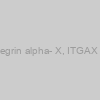 Human Integrin alpha- X, ITGAX ELISA KIT |
|||
| ELI-13625h | Nova Lifetech | 96tests | EUR 696 |
 ELISA Kit) Human Integrin Alpha X (CD11c) ELISA Kit |
|||
| MBS2127238-10x96StripWells | MyBiosource | 10x96-Strip-Wells | EUR 5320 |
 ELISA Kit) Human Integrin Alpha X (CD11c) ELISA Kit |
|||
| MBS2127238-24StripWells | MyBiosource | 24-Strip-Wells | EUR 360 |
 ELISA Kit) Human Integrin Alpha X (CD11c) ELISA Kit |
|||
| MBS2127238-48StripWells | MyBiosource | 48-Strip-Wells | EUR 545 |
 ELISA Kit) Human Integrin Alpha X (CD11c) ELISA Kit |
|||
| MBS2127238-5x96StripWells | MyBiosource | 5x96-Strip-Wells | EUR 2915 |
 ELISA Kit) Human Integrin Alpha X (CD11c) ELISA Kit |
|||
| MBS2127238-96StripWells | MyBiosource | 96-Strip-Wells | EUR 720 |
 ELISA Kit) Human Integrin Alpha X (CD11c) ELISA Kit |
|||
| MBS2709875-10x96StripWells | MyBiosource | 10x96-Strip-Wells | EUR 3130 |
 ELISA Kit) Human Integrin Alpha X (CD11c) ELISA Kit |
|||
| MBS2709875-24StripWells | MyBiosource | 24-Strip-Wells | EUR 255 |
 ELISA Kit) Human Integrin Alpha X (CD11c) ELISA Kit |
|||
| MBS2709875-48StripWells | MyBiosource | 48-Strip-Wells | EUR 330 |
 ELISA Kit) Human Integrin Alpha X (CD11c) ELISA Kit |
|||
| MBS2709875-5x96StripWells | MyBiosource | 5x96-Strip-Wells | EUR 1630 |
 ELISA Kit) Human Integrin Alpha X (CD11c) ELISA Kit |
|||
| MBS2709875-96StripWells | MyBiosource | 96-Strip-Wells | EUR 420 |
 ELISA Kit) Human Integrin Alpha X (ITGAX) ELISA Kit |
|||
| MBS9940475-10x96StripWells | MyBiosource | 10x96-Strip-Wells | EUR 6725 |
 ELISA Kit) Human Integrin Alpha X (ITGAX) ELISA Kit |
|||
| MBS9940475-48StripWells | MyBiosource | 48-Strip-Wells | EUR 550 |
 ELISA Kit) Human Integrin Alpha X (ITGAX) ELISA Kit |
|||
| MBS9940475-5x96StripWells | MyBiosource | 5x96-Strip-Wells | EUR 3420 |
 ELISA Kit) Human Integrin Alpha X (ITGAX) ELISA Kit |
|||
| MBS9940475-96StripWells | MyBiosource | 96-Strip-Wells | EUR 765 |
 ELISA Kit) Human Integrin alpha-X (ITGAX) ELISA Kit |
|||
| RK11290 | Abclonal | 96T | EUR 280 |
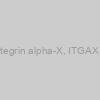 Human Integrin alpha-X, ITGAX ELISA Kit |
|||
| MBS9324714-10x96StripWells | MyBiosource | 10x96-Strip-Wells | EUR 6725 |
 Human Integrin alpha-X, ITGAX ELISA Kit |
|||
| MBS9324714-48StripWells | MyBiosource | 48-Strip-Wells | EUR 550 |
 Human Integrin alpha-X, ITGAX ELISA Kit |
|||
| MBS9324714-5x96StripWells | MyBiosource | 5x96-Strip-Wells | EUR 3420 |
 Human Integrin alpha-X, ITGAX ELISA Kit |
|||
| MBS9324714-96StripWells | MyBiosource | 96-Strip-Wells | EUR 765 |
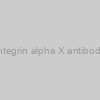 Integrin alpha X antibody |
|||
| 70R-12673 | Fitzgerald | 100 ul | EUR 550 |
|
|||
|
Description: Affinity purified Rabbit polyclonal Integrin alpha X antibody |
|||
 Integrin alpha X Antibody |
|||
| GWB-5111F7 | GenWay Biotech | 0.1 mg | Ask for price |
|
|||
 Integrin alpha X antibody |
|||
| MBS835754-01mL | MyBiosource | 0.1mL | EUR 1070 |
 Integrin alpha X antibody |
|||
| MBS835754-5x01mL | MyBiosource | 5x0.1mL | EUR 4655 |
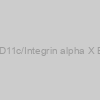 Human CD11c/Integrin alpha X ELISA KIT |
|||
| EF008489 | Nova Lifetech | 96tests | EUR 566 |
 Protein) Human Integrin Alpha X / CD11C (ITGAX) Protein |
|||
| abx166474-100g | Abbexa | 100 µg | EUR 525 |
 Protein) Human Integrin Alpha X / CD11C (ITGAX) Protein |
|||
| abx166474-10g | Abbexa | 10 µg | EUR 212.5 |
 Protein) Human Integrin Alpha X / CD11C (ITGAX) Protein |
|||
| abx166474-50g | Abbexa | 50 µg | EUR 362.5 |
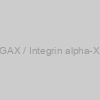 Human ITGAX / Integrin alpha-X ELISA Kit |
|||
| E9095h | EIAab | 96T | EUR 736 |
 Human ITGAX/Integrin alpha-X ELISA Kit |
|||
| MBS2905103-10x96StripWells | MyBiosource | 10x96-Strip-Wells | EUR 4080 |
 Human ITGAX/Integrin alpha-X ELISA Kit |
|||
| MBS2905103-48StripWells | MyBiosource | 48-Strip-Wells | EUR 390 |
 Human ITGAX/Integrin alpha-X ELISA Kit |
|||
| MBS2905103-5x96StripWells | MyBiosource | 5x96-Strip-Wells | EUR 2220 |
 Human ITGAX/Integrin alpha-X ELISA Kit |
|||
| MBS2905103-96StripWells | MyBiosource | 96-Strip-Wells | EUR 520 |
 Polyclonal Antibody (Human), PE) Integrin Alpha X (ITGaX) Polyclonal Antibody (Human), PE |
|||
| 4-PAB159Hu01-PE | Cloud-Clone |
|
|
|
|||
|
Description: A Rabbit polyclonal antibody against Human Integrin Alpha X (ITGaX). This antibody is labeled with PE. |
|||
, Alpha Polypeptide) (ITGAX), Human) Integrin, Alpha X (Antigen CD11C (P150), Alpha Polypeptide) (ITGAX), Human |
|||
| GWB-36F42C | GenWay Biotech | 0.05 mg | Ask for price |
|
|||
, Alpha Polypeptide) (ITGAX), Human) Integrin, Alpha X (Antigen CD11C (P150), Alpha Polypeptide) (ITGAX), Human |
|||
| GWB-570204 | GenWay Biotech | 0.05 mg | Ask for price |
|
|||
 , partial) Recombinant Human Integrin alpha-X (ITGAX) , partial |
|||
| MBS948167-005mgBaculovirus | MyBiosource | 0.05mg(Baculovirus) | EUR 1020 |
 , partial) Recombinant Human Integrin alpha-X (ITGAX) , partial |
|||
| MBS948167-005mgEColi | MyBiosource | 0.05mg(E-Coli) | EUR 690 |
 , partial) Recombinant Human Integrin alpha-X (ITGAX) , partial |
|||
| MBS948167-005mgYeast | MyBiosource | 0.05mg(Yeast) | EUR 850 |
 , partial) Recombinant Human Integrin alpha-X (ITGAX) , partial |
|||
| MBS948167-02mgEColi | MyBiosource | 0.2mg(E-Coli) | EUR 890 |
 , partial) Recombinant Human Integrin alpha-X (ITGAX) , partial |
|||
| MBS948167-05mgEColi | MyBiosource | 0.5mg(E-Coli) | EUR 980 |
 Polyclonal Antibody (Human), APC) Integrin Alpha X (ITGaX) Polyclonal Antibody (Human), APC |
|||
| 4-PAB159Hu01-APC | Cloud-Clone |
|
|
|
|||
|
Description: A Rabbit polyclonal antibody against Human Integrin Alpha X (ITGaX). This antibody is labeled with APC. |
|||
 Polyclonal Antibody (Human), Cy3) Integrin Alpha X (ITGaX) Polyclonal Antibody (Human), Cy3 |
|||
| 4-PAB159Hu01-Cy3 | Cloud-Clone |
|
|
|
|||
|
Description: A Rabbit polyclonal antibody against Human Integrin Alpha X (ITGaX). This antibody is labeled with Cy3. |
|||
 Polyclonal Antibody (Human), HRP) Integrin Alpha X (ITGaX) Polyclonal Antibody (Human), HRP |
|||
| 4-PAB159Hu01-HRP | Cloud-Clone |
|
|
|
|||
|
Description: A Rabbit polyclonal antibody against Human Integrin Alpha X (ITGaX). This antibody is labeled with HRP. |
|||
) Mouse Monoclonal anti-human Integrin alpha X (CD11c) |
|||
| hAP-0422 | Angio Proteomie | 100ug | EUR 250 |
 Polyclonal Antibody (Human), FITC) Integrin Alpha X (ITGaX) Polyclonal Antibody (Human), FITC |
|||
| 4-PAB159Hu01-FITC | Cloud-Clone |
|
|
|
|||
|
Description: A Rabbit polyclonal antibody against Human Integrin Alpha X (ITGaX). This antibody is labeled with FITC. |
|||
 ELISA Kit) Human Integrin Alpha X / CD11C (ITGAX) ELISA Kit |
|||
| abx259467-96tests | Abbexa | 96 tests | EUR 1093.2 |
|
|||
 ELISA Kit) Human Integrin Alpha X / CD11C (ITGAX) ELISA Kit |
|||
| abx259467-1mg | Abbexa | 1 mg | EUR 6187.5 |
 ELISA Kit) Human Integrin Alpha X / CD11C (ITGAX) ELISA Kit |
|||
| abx259467-20g | Abbexa | 20 µg | EUR 3275 |
 ELISA Kit) Human Integrin Alpha X / CD11C (ITGAX) ELISA Kit |
|||
| abx259467-5g | Abbexa | 5 µg | EUR 687.5 |
 Rat Integrin alpha-X |
|||
| E01A14183 | BlueGene | 96T | EUR 700 |
|
Description: ELISA |
|||
 Goat Integrin alpha-X |
|||
| E01A49092 | BlueGene | 96T | EUR 700 |
|
Description: ELISA |
|||
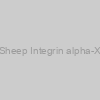 Sheep Integrin alpha-X |
|||
| E01A101385 | BlueGene | 96T | EUR 700 |
|
Description: ELISA |
|||
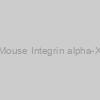 Mouse Integrin alpha-X |
|||
| E01A22925 | BlueGene | 96T | EUR 700 |
|
Description: ELISA |
|||
 Rabbit Integrin alpha-X |
|||
| E01A31659 | BlueGene | 96T | EUR 700 |
|
Description: ELISA |
|||
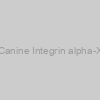 Canine Integrin alpha-X |
|||
| E01A66522 | BlueGene | 96T | EUR 700 |
|
Description: ELISA |
|||
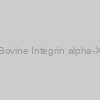 Bovine Integrin alpha-X |
|||
| E01A83957 | BlueGene | 96T | EUR 700 |
|
Description: ELISA |
|||
 Monkey Integrin alpha-X |
|||
| E01A75239 | BlueGene | 96T | EUR 700 |
|
Description: ELISA |
|||
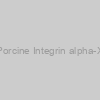 Porcine Integrin alpha-X |
|||
| E01A57810 | BlueGene | 96T | EUR 700 |
|
Description: ELISA |
|||
 Chicken Integrin alpha-X |
|||
| E01A92677 | BlueGene | 96T | EUR 700 |
|
Description: ELISA |
|||
 Antibody) Integrin Alpha X (ITGAX) Antibody |
|||
| 20-abx113189 | Abbexa |
|
|
|
|||
 Antibody) Integrin Alpha X (ITGaX) Antibody |
|||
| 20-abx104960 | Abbexa |
|
|
|
|||
 Antibody) Integrin Alpha X (ITGaX) Antibody |
|||
| 20-abx129411 | Abbexa |
|
|
|
|||
 Antibody) Integrin Alpha X (ITGAX) Antibody |
|||
| 20-abx124171 | Abbexa |
|
|
|
|||